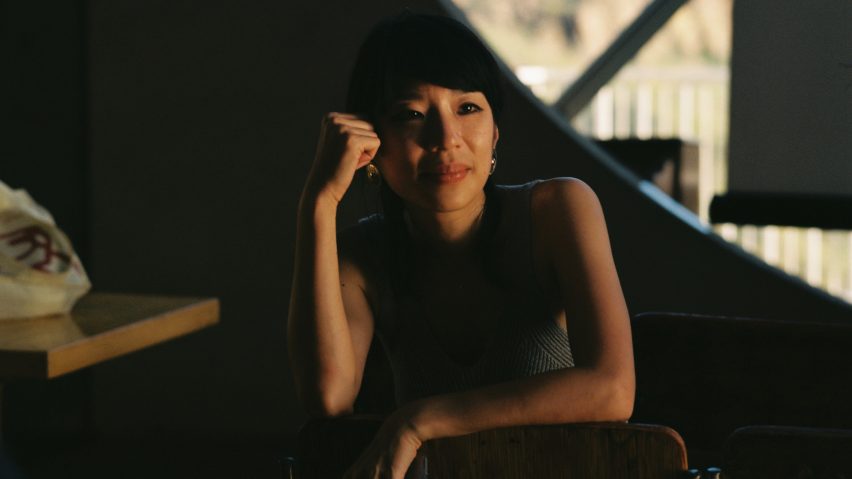Following a period of upheaval, The School of Architecture's policy of transparency between staff and students can make it a model for more "equitable" architectural education, says new dean Stephanie Lin in this interview.
As dean, Lin aims to focus on students well being at a time when global architectural education is under scrutiny and The School of Architecture (TSOA), which was formerly called the School of Architecture at Taliesin, itself is going through changes following a seperation with the Frank Lloyd Wright Foundation.
"Because the school has gone through so much in the past two years, we have put a lot of investment into the continuity and health of our community amidst a lot of changes," said Lin.
"More broadly, this is an important period of transition not just for TSOA but for architectural education at large," she said in reference to scrutiny towards architecture education made public in recent controversies at the Southern California Institute of Technology (SCI-Arc) and Bartlett in London.
Lin joined the faculty of TSOA in spring 2021 a year after the school, which was founded by American architect Frank Lloyd Wright in 1932, changed its name and move out of its historic home at Taliesen West.
Split with the Frank Lloyd Wright Foundation
In 2020, a decision was made by the board to close the school, but the decision was ultimately reversed and outside funding was secured after a public outcry at the closure.
After leaving the Taliesin facilities in Arizona and Wisconsin, the school ended up housed in the studios and residences at Cosanti residence with additional facilities set up at the nearby experimental desert community Arcosanti, both designed by Italian-American architect Paolo Soleri in Arizona.
Lin believes that the renamed school can use its collaborative model to emphasise an alternative model of architecture education.
"I really believe our school can serve as a strong model in this context, as we look ahead and continue to find new forms and formats of equitable interaction that are at the core of our culture and pedagogy."
She believes that some of TSOA's methods allow for "transparency and respect between students, faculty and school leadership".
She previously taught at the architecture and design school Cooper Union in New Yor City, runs her own design practice called Present Forms and is part of the architectural collective Office III.
Dialogue between staff and students essential
For Lin, dialogue between staff and students and leadership roles for learners "fosters a very strong sense of trust" and "camaraderie" which "does not lend itself well to exploitation".
These practices include "a very active student government" and student involvement with curriculum creation.
"There's representation for students on the Board of Governors meetings that we have every quarter," said Lin.
TSOA employs a model where a handful of staff stays onsite at the school during the academic calendar. Students and staff share amenities and interact daily outside of the classroom.
“I think it's part of a larger ethical model in which students and faculty they're forced into a collaborative mode,” she continued.
"There isn't a whole lot of hierarchy, for better or for worse," said Lin
"There aren't a lot of schools in which students and faculty and staff kind of live together and see each other on a 24-hour basis or a daily basis."
Students should understand material properties
During their stay at the school, students can either live in dormitories at Arcosanti or in the shelters built by students in previous years.
The exposure to past work and the environment allows students to understand materials as a basis for architectural education is a high priority for Lin at TSOA.
"It's a tool for imagining new forms of architecture," said Lin. "Really diving deep into material properties, learning their behavior, learning how they might be used beyond their typical applications."
Lin believes that this exposure to materials is essential to architectural education after leaving Wright's Taliesin West. The school has found a home in what Lin calls "the epic desert landscape" at the architectural community Arcosanti, managed by the non-profit Cosanti Foundation.
"We've been continuing the same curriculum," said Lin. "Much of the same faculty has stayed on board. We've also onboarded new faculty."
Lin said that architectural education could use fewer dividing lines between the different disciplines like landscape architecture and studio workshops.
"Finding ways to overlap those classes so they're not thought of as distinct is not a new idea in education, but I think we do have the opportunity to do it in our own way," she said.
Working with underserved communities
Students also take part in a curriculum called the Usonia 21 Program that sees them work in "underserved communities, with an emphasis on innovative affordable housing and economic development".
The program has students do documentary research, and help to design with input from communities.
The most recent iteration involved the student’s work in Seabreeze, North Carolina where "students are working with the community to co-design a new multi-use development that will feature commercial and culinary spaces along with affordable housing and a small museum dedicated to the history of the community and the place," according to TSOA.
For more projects and events coming from American architecture schools, see Dezeen's School Shows.
The portrait of Stephanie Lin is by Quin Dominguez.

